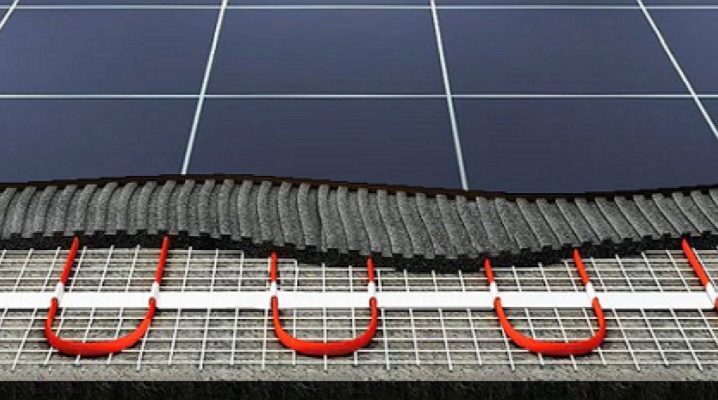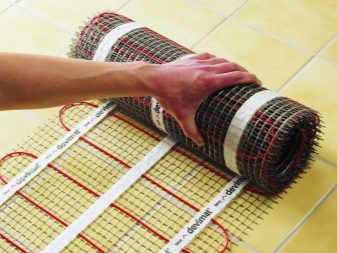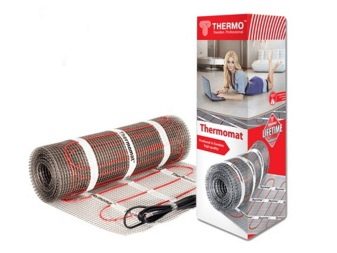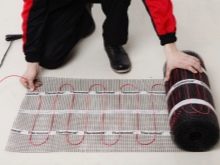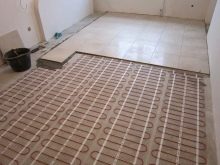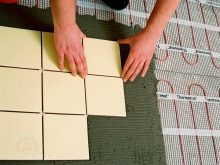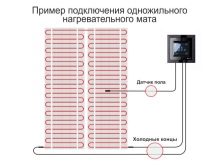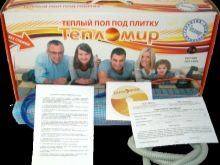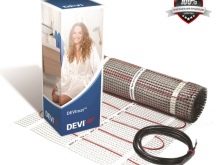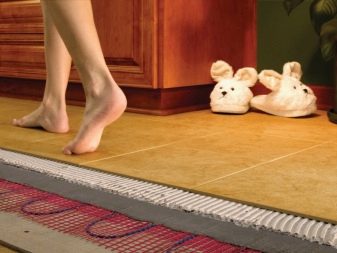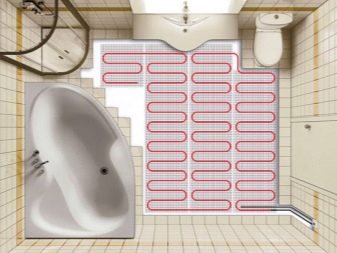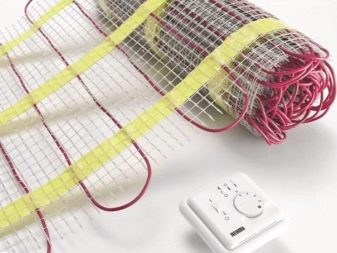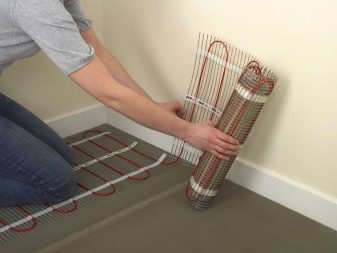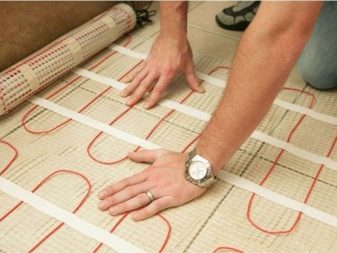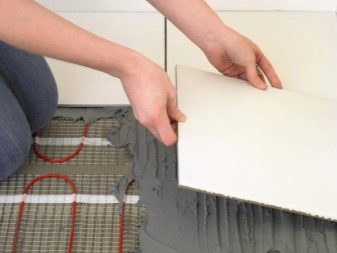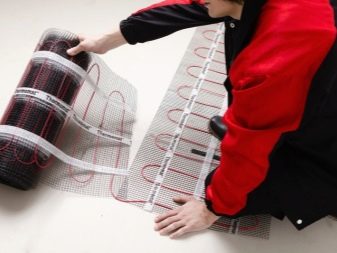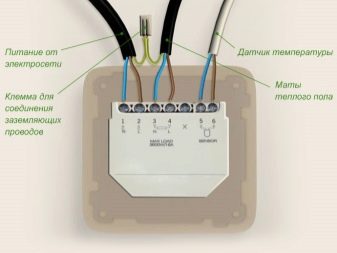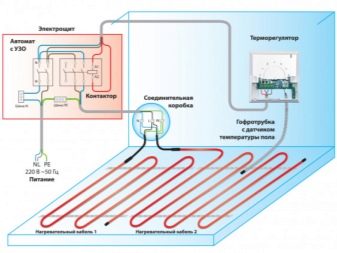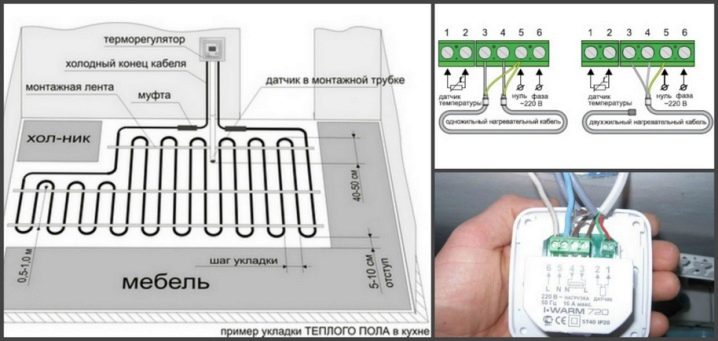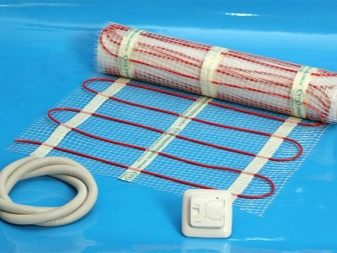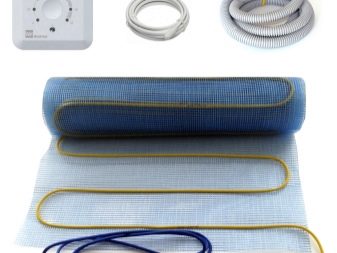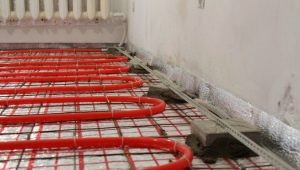How to lay the heating mats for a warm floor under the tile?
The equipment of the house warm floors has long been included in the usual element of repair. There are two ways of laying and creating warm floors: one of them is based on the circulation of water in the heating system, and the second - on the use of electricity.
To date, the electric method of floor heating is recognized as the most economical, and heating mats allow to effectively implement this opportunity. This material is easy to install and maintain, is equipped with regulators and is an independent heating system.
What is a heating mat
The mat for a warm floor is a grid of fiberglass with a thin electric cable attached to it. Due to the fineness of the grid, the heating mats do not require an additional screed for the floor, and the cable wavyly distributed over the grid uniformly heats the entire surface under the coating. The mat fits directly into the tile adhesive, thereby not increasing the thickness of the floor.
The heating temperature is controlled by built-in sensors and thermostats brought to the surface.
Types of heating mats
According to the configuration, heating mats can be single-core and double-core:
- Single core consists of one heating conductor that causes some inconvenience during installation. Cloth mat must be deployed on the area of coverage so as to bring the end of the cable back to the thermostat. Single-core mats have a high degree of electromagnetic radiation, so it is recommended to lay them only in rooms where they do not spend much time. This can be a bathroom or a corridor.
- Strong mats consist of two conductors, have a looped configuration, which greatly simplifies the installation of the floor. Two cables (heating and conductive) are located on the grid in such a way that their ends initially go to the thermostat.
This design allows to reduce the electromagnetic background, suitable for bedrooms and living rooms, but has a higher price.
Advantages of a frosted heater
The heating mat considerably surpasses any other type of floor heaters in its characteristics:
- Easy installation. The grid on which the electrical cable is attached, has standard dimensions in width, is sold and transported in rolls. On the prepared surface, the grid is laid out according to the principle of unfolding the carpet, which greatly facilitates the installation process. The cable on the canvas is located and fixed evenly, so that the heat across the floor will be distributed without "gaps". The heating mat is thin enough, does not require additional floor screed and does not increase the height of the floor covering. The net itself is a reinforcing element of the floor.
- Convenience in the calculations. No need to calculate the length of the cable and distribute it over the surface. It is enough to correlate the dimensions of the room and the netting fabric, measure the required length and the number of lanes. The heating mat is laid directly under the tile, due to which the surface heats up quickly. Thermostats allow you to automatically set a comfortable temperature.
- Ecologically safe material of a grid - fiber glass. Strong designs of heating mats have the lowest possible level of electrical radiation.
Installation Features
You need to know the following:
- Start laying the heating mats on the floor surface should be with the preparation of the installation plan. After that, the surface is thoroughly cleaned, and markup is made. The cable mat can be laid both on the old floor and on the concrete screed. In the latter case, the surface is checked for defects, chips and cracks, and a primer is applied. It is not superfluous to lay thermal insulation on the subfloor, so that the heating system only works to supply heat upwards and not to the bottom layer of concrete.
- The place of the thermostat is determined and fixed - the point from which the mat will be unfolded. Equipped with a place to install the junction box, thermostat fasteners. These parts of the system should not be located below 30 cm above the floor.
- After installing the thermostat from the roll, the necessary length of material is unwound and placed on the marking. The grid is cut to the desired length, and the cable is spread over the second and subsequent bands.
It should be borne in mind that you can only cut the grid itself, leaving the cable intact, and when laying, make sure that the cable does not intersect, otherwise shorting cannot be avoided.
- After the cable is distributed over the floor surface, it is necessary to check its performance. With the help of a tester, resistance and insulation are checked. If everything is in order, the system can be turned on and allowed to warm up. Teplomata heat up quickly enough and keep the temperature controlled by a thermostat.
- Making sure that the system is working properly, you can begin to lay tiles. Experts recommend applying a heat-resistant tile adhesive to the entire surface of the floor that will withstand high temperatures. It is enough that a layer of glue covers the gaps between the cable. Laying tiles produced by standard technology directly on the surface of the heating mat (without screed).
Thermostat
The efficiency of the floor mat largely depends on the correct installation of the thermostat. Thermal sensors protect the cable from overheating and allow you to set the desired temperature. The installation of the thermostat involves the creation of a special notch in the wall and on the floor where the heating mat wires will be placed.
The entire thermal sensor system should be well insulated from moisture and dust.
Temperature controllers can be either the simplest - electronic, or with a built-in programmable system.
Tips for choosing
The main criteria for choosing a heating mat is the heating power and surface area. Calculate in advance the parameters of the room and the amount of material required. Heating mats are best suited for ceramic tiles or porcelain tiles. Other materials may not withstand high temperatures, as a result of which they will quickly fail.
According to customer reviews, floor heating systems are much more economical than radiators and stoves. And heating mats surpass their counterparts in simplicity and ease of installation.
Answers to many questions about installing underfloor heating, see the following video.
